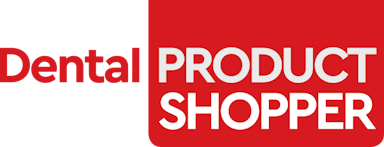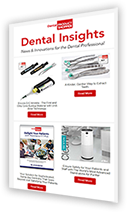A Custom Plan for Every Clear Aligner Case
Serving tens of thousands of clinicians worldwide, ClearCorrect clear aligner treatment fits the needs of every patient with customizable features such as bars, pontics, guides, bite ramps, and engagers
 In her 15-year career, Dr. Rebecca Komischke has treated hundreds of patients with clear aligners, and no two cases have ever been exactly alike. But while every patient case is different, the goal is always the same: a straighter smile. That’s why it’s essential to have a clear aligner treatment plan that offers a variety of customizable features.
In her 15-year career, Dr. Rebecca Komischke has treated hundreds of patients with clear aligners, and no two cases have ever been exactly alike. But while every patient case is different, the goal is always the same: a straighter smile. That’s why it’s essential to have a clear aligner treatment plan that offers a variety of customizable features.
“As a general dentist offering aligner therapy, ClearCorrect was far more attractive to me because I wanted to treat a wide range of patient cases,” said Dr. Komischke, whose practice is in Medebach, Germany.
Made of ClearQuartz, a state-of-the-art, trilayer, durable aligner material with remarkable clarity, ClearCorrect aligners employ an unscalloped design that extends past the gingival margin for increased patient comfort, higher esthetics, and better force transmission to the teeth. The aligners are comfortable and flexible, stain- and tear-resistant, and can withstand sustained force. Recognizing that each patient case is unique, ClearCorrect offers a variety of customizable features, including bars, pontics, guides, bite ramps, and engagers—and Dr. Komischke has used each and every one of them in her aligner workflow.
 A Unique Solution for Every Case
A Unique Solution for Every Case
“A bar is used in the non-esthetic zone to facilitate opening or closing spaces, while allowing good tooth coverage of the neighboring teeth—either to prevent tipping or as a way to help upright them,” she explained. “Bars also can be used to passively cover space in an arch—even if the gap is not being treated orthodontically, maintaining the integrity of the aligner throughout the arch is necessary for retention,” she continued.
Differing slightly from bars, pontics are spaces in the aligner that are formed to resemble missing or extracted teeth. Pontics can be painted with pontic paint or filled with tooth-colored wax.
“I often extract a lower middle incisor if I’m dealing with severe crowding of the lower anteriors,” Dr. Komischke shared. “In these cases, I determine when I will extract the incisor, and from that point on the pontic is planned in the aligners until the space is smaller than 3 mm.”
Guides are another custom feature especially tailored for younger patients with developing dentitions. They can be requested as a tooth shape or a bubble shape, and act as space holders to aid erupting teeth.
“Guides are essential when I treat mixed dentition. They are like bubbles in the aligner that allow the tooth to erupt in the space without being disturbed,” said Dr. Komischke, who has extensive experience in early-on aligner therapy with adolescents. “When the tooth is fully erupted, I scan for revision to get a tight fit on the aligner, which is necessary to move it into the correct position. This is quite frequent with ectopic canines or second molars.”
Another way to customize clear aligner treatment is by using bite ramps, which are thermoformed protrusions in the aligner that hold the arches out of occlusion and prevent the opposing arch from interfering with the tooth movements needed to treat deep bites and crossbites. Bite ramps, which Dr. Komischke describes as “little shelves on the palatal surface for the upper incisors,” work by creating premature contact in the anterior region, which then takes the posterior teeth out of occlusion and removes unwanted posterior bite forces, allowing other corrections to proceed as planned.
“Bite ramps are an efficient way to correct a deep bite but are also very useful to facilitate the correction of a severe crossbite,” explained Dr. Komischke. “For example, when applied to the occlusal surface of the molar region, bite ramps can be extremely useful for working on a frontal crossbite, especially if it is a rather deep one.”
While known by multiple names, including buttons and attachments, engagers are another add-on that can be used to customize clear aligner treatment. Made from composite resin material, engagers are small, temporary shapes placed on the teeth in a similar way to handles, essentially allowing the aligner to grip the tooth.
“I mainly use engagers to aid with intrusion and rotation, or to heighten my retention in the molar region if I’m treating heavy anterior crowding,” she shared. “I prefer fewer attachments, opting for longer and larger attachments that go up to 4 mm in length and 2 mm in height.”
Introducing the Latest ClearPilot Software
Dr. Komischke believes the biggest challenge clinicians face when using a clear aligner system is selecting a digital treatment plan that will guide successful patient treatment. The web-based ClearPilot 6.0 treatment planning software allows clinicians to better visualize planned treatment outcomes, featuring a more intuitive treatment viewer software.
“We’re assessing a lot of information when we treatment plan, which is why it is essential to have an intuitive treatment viewer with 3D controls that allow us to make corrections while assessing the treatment plan,” she shared. “ClearPilot 6.0 empowers us to do that because all the necessary records and information from the technician are in the software. It’s helpful for communicating
with our colleagues and patients, and it serves as a comprehensive database for all our cases.”





